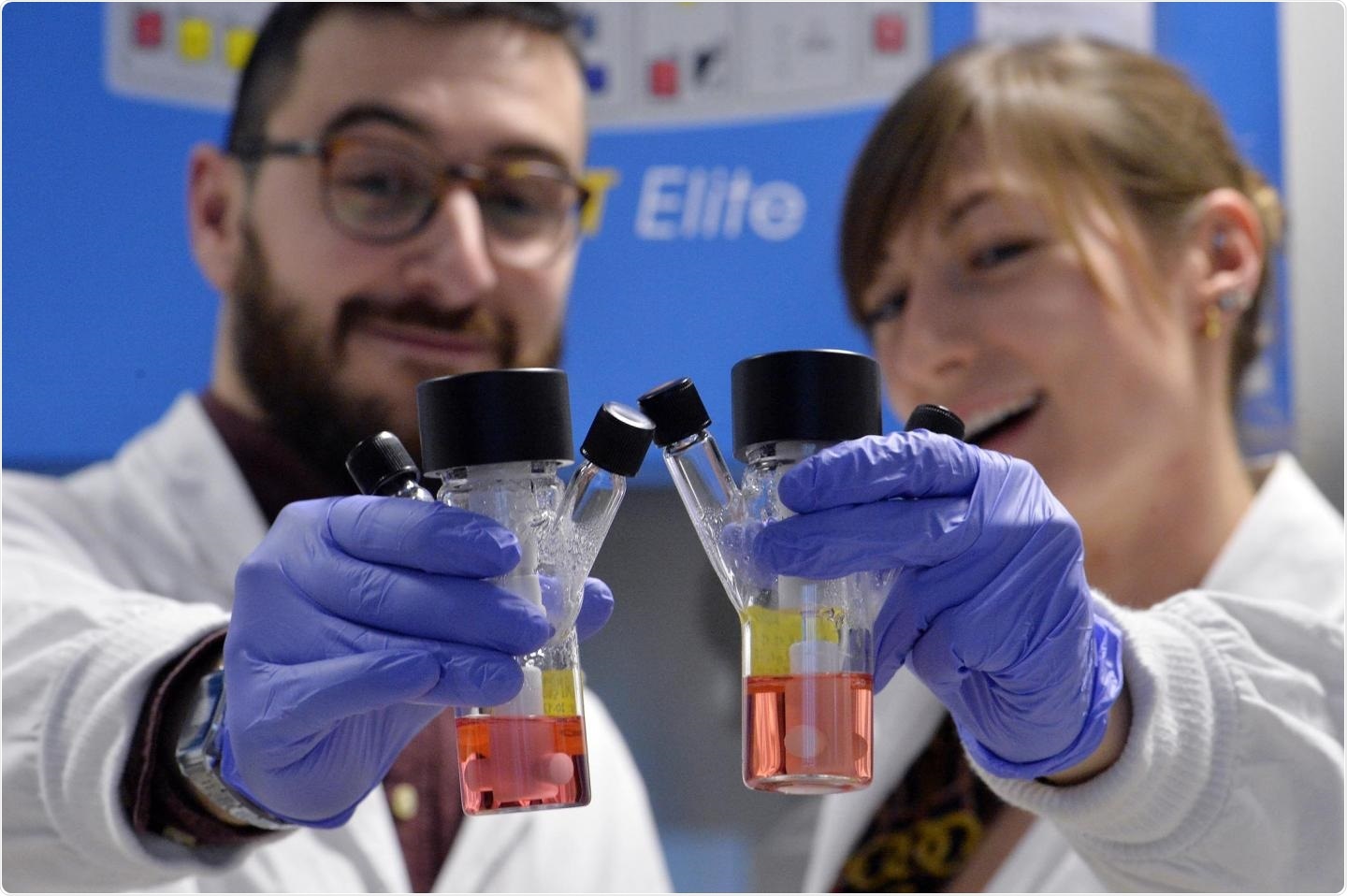A new study coordinated by the University of Trento could have identified the cell of origin of medulloblastoma—a malignant tumor in children that affects the central nervous system. In this study, scientists have used organoids to replicate the tumor tissue, for the first time.

Researchers deal with organoids at the Armenise-Harvard Laboratory of Brain Cancer at the Department of Cellular, computational and integrative biology of UniTrento. Image Credit: University of Trento, PH. Alessio Coser.
The study was performed by a global collaboration involving researchers headed by Luca Tiberi from the Armenise-Harvard Laboratory of Brain Cancer at the Department of Cellular, Computational and Integrative Biology - Cibio of the University of Trento, the Paris Brain Institute-Institut du Cerveau at Sorbonne Université located in Paris, the Hopp Children’s Cancer Center (KiTZ) based in Heidelberg, Germany, and Sapienza University in Rome.
The research work was funded by Fondazione Armenise-Harvard, Fondazione Airc (Italian Association for Cancer Research) and Fondazione Caritro from Trento. Published in the Science Advances journal, the study results may lead to better and more effective therapies.
The researchers are pleased with the results achieved.
For the first time, we have used an organoid model that we created and developed in past months. Thanks to these in vitro cancer tissues in 3D, we were able to identify the type of cell that can develop into medulloblastoma. These cells in fact express Notch1/S100b, and play a key role in the onset, progression, and prognosis of this type of childhood brain cancer.”
Luca Tiberi, Coordinator, Armenise-Harvard Laboratory of Brain Cancer, Department of Cellular, Computational and Integrative Biology - Cibio, University of Trento
Tiberi is also the corresponding author of the study.
Organoids are produced from blood or skin cells and are grown by hundreds in the laboratories of the University of Trento. They resemble irregular balls the size of a peanut. Organoids are used by researchers to figure out the genetic mechanisms that are responsible for causing the most common brain cancer affecting children. They are also used to investigate new therapies for incurable medical conditions.
Organoids serve as a tumor model in the laboratory. The results may lead to developments in brain cancer studies and, in the days to come, could be used to investigate other tumors in laboratory settings at a low cost when compared to earlier previous technologies, and to perform larger screenings to test customized therapies and novel drugs.
About organoids
Organoids are not cell aggregates but rather organized, specialized cells that simulate the organ being studied as much as possible. The 32D models enable scientists to conduct studies in a laboratory environment. Since the present study focuses on brain cancer in children, working with patients would not be possible.
Hence, the research team from the Armenise-Harvard Laboratory of the Department of Cellular, Computational and Integrated Biology - Cibio of the University of Trento employed organoids to decode the genetic mechanisms of childhood brain cancer and to identify new treatments for the almost untreatable disorders.
Brian tumors are the leading cause of cancer-related deaths in children. They are highly aggressive and need an integrated and multi-disciplinary approach. Although substantial advancements have been made to cure these tumors, cancer survivors may experience long-term side effects that considerably affect their quality of life. Therapies usually become ineffective when the tumor appears again after some time.
The study focused on medulloblastoma, the most common malignant brain tumor in children that affects the central nervous system. According to the AIRC Italian Association for Cancer Research, the survival rate at five years from the diagnosis of medulloblastoma is about 70%.
Source:
Journal reference:
Ballabio, C., et al. (2021) Notch1 switches progenitor competence in inducing medulloblastoma. Science Advances. doi.org/10.1126/sciadv.abd2781.